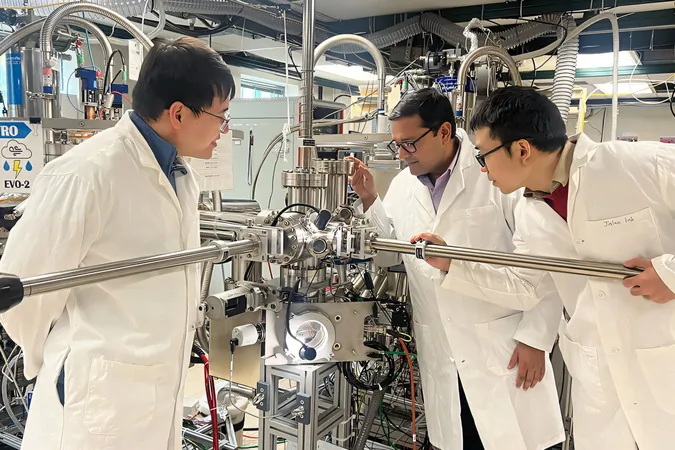
Revolutionary New Material Promises to Transform Electronics By Enhancing Speed and Efficiency
2024-11-08
Author: Daniel
Introduction
In a groundbreaking study, researchers at the University of Minnesota have developed a cutting-edge material that could revolutionize the future of high-power electronics, making them faster, more efficient, and even transparent. This innovative material allows electrons to navigate more swiftly, while also being transparent to visible and ultraviolet light, setting a new record in semiconductor technology.
Published in the esteemed journal Science Advances, this research signifies a major leap in semiconductor design, which plays a critical role in a trillion-dollar global industry poised for growth as digital technologies evolve.
The Importance of Semiconductors
Semiconductors are the backbone of nearly all electronic devices, from smartphones to high-tech medical equipment. A crucial area of focus in this field is the advancement of what scientists call “ultra-wide band gap” materials. These materials can conduct electricity effectively even under extreme conditions, making them vital for creating more durable and robust electronics able to handle elevated temperatures.
Research Goals and Achievements
In their research, the Minnesota team aimed to create a new class of materials characterized by an increased “band gap” which bolsters both transparency and conductivity. This impressive achievement not only supports the creation of faster, more efficient devices but also lays the groundwork for significant breakthroughs in computers, smartphones, and potentially groundbreaking applications in quantum computing.
Material Characteristics
The new material developed is a type of transparent conducting oxide, structured in a specialized thin-layer design to enhance transparency without compromising conductivity. This leap forward is particularly timely as the demand for more capable materials rises with advancements in technology and artificial intelligence applications.
Expert Insights
“This breakthrough is a game-changer for transparent conducting materials, enabling us to overcome limitations that have hampered deep ultraviolet device performance for years,” stated Bharat Jalan, the Shell Chair and a leading professor at the University of Minnesota’s Department of Chemical Engineering and Materials Science.
Potential for Innovation
The study highlights an unprecedented combination of transparency and conductivity in the deep-ultraviolet spectrum, which could spur innovations in high-power and optoelectronic devices, making them suitable for operating under demanding conditions.
Research Team Composition
The research team, comprised of co-authors Fengdeng Liu and Zhifei Yang—Ph.D. students in chemical engineering and materials science—worked vigorously in Jalan's lab, achieving material properties that they initially found hard to believe. Their extensive experimental efforts focused on minimizing defects in the material to maximize performance.
Methodology
“By employing detailed electron microscopy techniques, we verified that the material was exceptionally pure, devoid of discernible defects. This discovery underscores the immense potential of oxide-based perovskites as semiconductor materials when defects are effectively managed,” explained Andre Mkhoyan, a senior author on the study and esteemed professor at the University of Minnesota.
Broader Implications
The implications of this research go far beyond electronic devices. The ability to create materials that are both transparent and conductive could open the door to the development of highly efficient renewable energy technologies, such as solar panels, where light transmission is crucial.
Research Collaborators
In addition to Jalan, Liu, Yang, and Mkhoyan, the research team also included Silo Guo from the University of Minnesota and collaborators David Abramovitch and Marco Bernardi from the California Institute of Technology. Together, they have set the stage for a transformative leap in the field of electronics, tantalizing the tech world with the possibilities that lie ahead. Stay tuned for more updates on this exciting development that could very well change the landscape of technology as we know it!




 Brasil (PT)
Brasil (PT)
 Canada (EN)
Canada (EN)
 Chile (ES)
Chile (ES)
 España (ES)
España (ES)
 France (FR)
France (FR)
 Hong Kong (EN)
Hong Kong (EN)
 Italia (IT)
Italia (IT)
 日本 (JA)
日本 (JA)
 Magyarország (HU)
Magyarország (HU)
 Norge (NO)
Norge (NO)
 Polska (PL)
Polska (PL)
 Schweiz (DE)
Schweiz (DE)
 Singapore (EN)
Singapore (EN)
 Sverige (SV)
Sverige (SV)
 Suomi (FI)
Suomi (FI)
 Türkiye (TR)
Türkiye (TR)